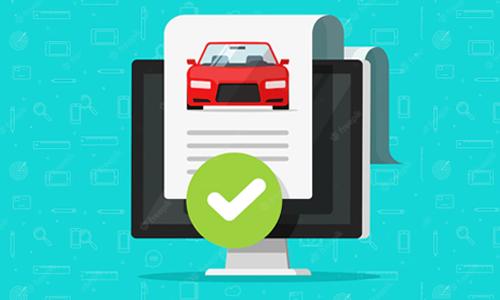Insurance documents are lengthy, filled with words most of us have rarely ever heard of and rather hard to read. Reading your car insurance policy document is not going to be something as easy as reading a nice novel curled up in your bed. But regardless of the difficulty level, you must not only read these documents properly but understand every aspect of it. Your car insurance policy documents are going to contain several key terms and conditions that may determine the chances of your claim settlement and even the premium amount. To understand the car insurance terminology properly, you will need some familiarity with car insurance policy documents as well as some generally unfamiliar terms used in them.
Parts of a Complete Car Insurance Policy Document Set
A complete set of your car insurance policy documents consists of a few different parts. Almost all insurance contact documents would have the below-mentioned parts regardless of the insurance provider or the plan that you choose:
The Declaration Page
This is going to be the very first page of your insurance contract which will state the basic terms of the plan. For example, information of the insured, the insurer, the car insurance policy is chosen, general coverage of the plan, Coverage limits like assured sum, etc. This page is going to be like any other basic contract document and will probably even have an identical signature column on it.
Definitions
This particular section generally includes the descriptions and definitions of the basic insurance terms such as the “insured”, the “insurer”, “liability”, etc. You can use this section to grab a better understanding of these concepts. However, these definitions can be highly technical and often confusing too. Although, do not get agitated if you find some unfamiliar written here as that’s probably just the phrasing.
Coverage Page
This is the page that will need your complete attention. The coverage page would contain all the specific covers that the insurance plan is providing you. For example, if it a comprehensive car insurance policy, the coverage page will state that third-party liabilities, damages to own vehicle, own medical expenses, theft, etc. The coverage page offers s detailed insight into the inclusions of the plan.
Exclusion Page
This page is going to contain a lot of information in fine print so make sure you read it all. The exclusion page states all the situations and things that are not covered by the car insurance policy. You must be aware of many things from this alr4eady, However, still take the time to scan through the complete list at least once.
Limits and/or Special Limits
Limits are the capping on the assured sum of a car insurance policy and several covers it comes with. For example, if your car insurance policy covers windshield damages and there is a limit on the expenses covered, it will be written here. The same goes for each kind of coverage and benefit in the plan which comes with a limit.
Terms and Conditions
A basic page that is present in all kinds of contracts and not just car insurance policy contracts. The terms in conditions page will include all the responsibilities that the insurance companies will have towards you as your provider. It will also include your responsibilities as a customer, the payment conditions and plan, liabilities of the insurer and more. Make sure you understand all the important terms firsthand.
Duties in Case of a Loss
This part is completely for your benefit. Duties in case of loss page explain what you should do if you encounter a loss of any kind that is covered by the car insurance policy. These are just basic duties such as notifying the police (if applicable), the insurance company, securing a foothold to protect the vehicle from further damage, etc.
Endorsements
This part will contain all the optional coverages available to be added to your car insurance policy. Endorsements are better known as the add-ons or the riders of a car insurance policy. You can choose to pick some for your benefit and add them to the plan structure. However, endorsements come with an additional price so make sure you check them before choosing.
Important Terminologies in Car Insurance Policy
Now that you are familiar with the parts of a car insurance policy, you would need to learn some basic, regularly-used terminologies in these contracts. Knowing these terms would help you ideally read and understand all the important things that the plan state and work around it accordingly.
Actuary
An actuary would be a professional who assesses the risks associated with the things that the insurance company insures. Actuaries are specialists skilled in risk mathematics. They are in charge of finding out the probabilities of encountering an event of a loss if the insurance company agrees to protect a vehicle. These losses can include accidents, thefts, injuries, etc. Every individual customer is assigned to an actuary who then computes the risk for them on a case-by-case basis. This risk analysis helps the insurance company in deciding the premium amount for each policyholder as well. An actuary can also be referred to as an underwriter.
Add-Ons
Also known as a rider, add-ons are small additional coverages offered by the insurance companies for an additional premium. You can choose to have as many add-ons as you like in your car insurance policy. However, note that add-ons can only be taken with a comprehensive car insurance policy and not the basic third-party car insurance policy.
Bumper-to-Bumper Cover
This phrase explains one of the most comprehensive warranties that car insurance companies offer. A bumper-to-bumper coverage would every part and accessory falling between the front and the rear bumper of the car against damages.
Claim
A claim in car insurance policy terminologies refers to the official request a policyholder raises with the insurance provider to have them cover the expenses risen due to loss or damage of the vehicle. Claims can be raised by the policyholder only. But if they are not able to do so due to some reason, a relative or friend can raise the claim on their behalf as well.
Comprehensive Cover
A comprehensive cover is simply the car insurance policy that offers protection against not only third-party liabilities but also against damages to own vehicle. A comprehensive cover would offer protection to your vehicle in case of theft, fire, man-made disasters, natural disasters, accidents, collisions, etc. There are a few more benefits the policyholder gets with a comprehensive cover.
CSR or Claim Settlement Ratio
The claim settlement ratio is the numerical value given to insurance companies as per the number of claims they settle out of the total claims submitted to them. A higher claim settlement ratio would represent that the insurance company offers a good range of benefits and is also fair when it comes to settlements of the claims.
Contributory Negligence
Contributory negligence refers to the voluntary negligence of the vehicle by the owner of the policyholder which leads to damages. The negligence can include not taking the everyday safety measures, basic maintenance of the vehicle and more.
Deductible
The deductible is the part of the total expense that is to be paid by the insurance holder in the event of a claim. Deductibles can be of two types – mandatory and voluntary. The mandatory deductible amount is pre-decided by the insurance company while the voluntary deductible can be chosen by the policyholder.
Grace Period
The additional time allowed to renew the car insurance policy after the tenure ends is known as the grace period. The basic car insurance policy tenure in the UAE is 12 months and the grace period allowed is 30 days.
IDV
IDV or insured declared value in a car insurance policy is the maximum assured amount to be offered by the insurance company in case of the total loss of the car. IDV is calculated by subtracting the depreciation of the car from the ex-showroom price of the car stated on the invoice.
Network Garages
The network garages of insurance companies are the garages where you can avail yourself cashless repair facility for your vehicle. They are also often referred to as cashless garages as well. The garages are directly paid for by the insurance company.
Premium
Premium is the amount paid by the insurance holder to the insurance company. Insurance companies charge premium amounts in return for taking on the risk of protecting the insurance holder’s vehicles.
Quote
The initial estimate amount to be paid as a premium by the insurance holder is referred to as the quote. Obtaining a quote for the insurance plan you want to take gives you a fair idea of the price of the insurance plan for your car. This amount doesn’t change a lot when finalised and hence can be seen as the somewhat correct interpretation of the actual expenses you will be making.
Surcharge or Loading
The surcharge is the additional amount added to the premium later during the plan tenure if the policyholder exhibits a kind of behaviour that increases the risk for the insurance company. The reasons for loading or surcharge on the premium can include poor or rash driving, negligence of the vehicle, etc.

Conclusion
With the proper knowledge of the parts of a car insurance policy and all the important terms involved in the process, you can not only easily read the contract documents but also ensure that everything is in place. It will be far easier and quite convenient to understand all the technicalities involved in the insurance contract when you have a proper understanding of the terms used in a car insurance policy contract. Not that the insurance companies are going to withhold any information, you still must always be extra sure about every expense you make that can be a big investment for the future too.
More From Car Insurance
- Recent Articles
- Popular Articles
.jpg)




-in-car-insurance.jpg)










